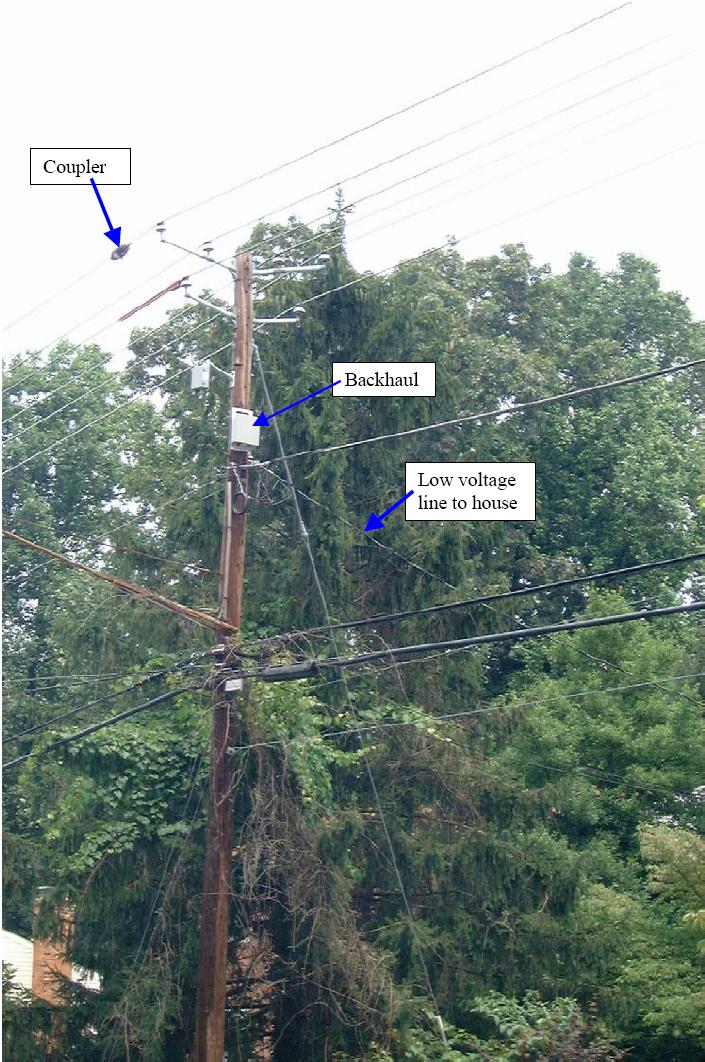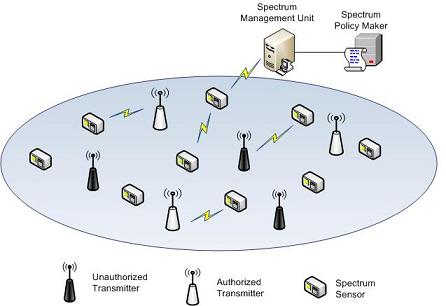Broadband over Powerline Communications (BPL)
Through its vast infrastructure and capability of interconnecting virtually every premise, the electric power distribution grid presents an economic option for broadband signal delivery in the last mile. In the United States, BPL networks are categorized by two kinds: (1) Access BPL, operating at frequencies between 1.705 MHz and 80 MHz over low- and medium-voltage power lines for interconnection between customer premises and the Internet; and (2) In-House BPL, using low-voltage wiring and electric power outlets for networking within a user’s premises and/or connecting end premises to access BPL networks. As a medium designed for transmission of AC power at 60 Hz, power lines carrying broadband signals may cause perceptible interference to incumbent radio services in its operating frequency range, including Federal communications, shortwave and TV broadcasting, and amateur radios. The interference concerns regarding BPL have launched several field tests and analytical studies, e.g., NTIA and ARRL.
We investigate the electromagnetic (EM) emissions of an access BPL system on overhead medium-voltage (MV) wires, a configuration of particular interest for US deployments. Our interest in MV BPL exceeds that for in-house networks because (a) its EM emissions are more likely to interfere with the public radio services due to its large physical dimension and near-street locations; (b) it has a simpler system structure that can possibly be abstracted into analytical models without loss of generality. We aim to provide an analytical framework for computing BPL-created electric fields with good accuracy and assessing the BPL interference in a general sense so that the results will not be confined to particular system configurations.
 Figure D-41 in NTIA Report 04-413 "Potential Interference from Broadband Over Power Line (BPL) Systems to Federal Goverment Radiocommunications at 1.7 - 80 MHz" Figure D-41 in NTIA Report 04-413 "Potential Interference from Broadband Over Power Line (BPL) Systems to Federal Goverment Radiocommunications at 1.7 - 80 MHz" |
Interference Analysis in Cognitive Radios
 The openness of the lower-layer protocol stacks renders cognitive radios (CR) an appealing solution to DSA. Its open nature will increase the flexibility of spectrum utilization and promote spectrally-efficient communication. Nevertheless, due to the exposure of the protocol stacks to the public, CR platforms can become a tempting target for adversaries or irresponsible secondary users. A misuse of a CR can significantly compromise the benefits of DSA and threaten the privileges of incumbent users. Therefore, having the ability to enforce spectrum etiquettes is critical to effectiveness and correctness of a DSA system. In this project, we aim to provide a systematic solution to reliable DSA, including the network structure and policy enforcement.
We will propose several detection and localization schemes dedicated to a DSA environment.
The openness of the lower-layer protocol stacks renders cognitive radios (CR) an appealing solution to DSA. Its open nature will increase the flexibility of spectrum utilization and promote spectrally-efficient communication. Nevertheless, due to the exposure of the protocol stacks to the public, CR platforms can become a tempting target for adversaries or irresponsible secondary users. A misuse of a CR can significantly compromise the benefits of DSA and threaten the privileges of incumbent users. Therefore, having the ability to enforce spectrum etiquettes is critical to effectiveness and correctness of a DSA system. In this project, we aim to provide a systematic solution to reliable DSA, including the network structure and policy enforcement.
We will propose several detection and localization schemes dedicated to a DSA environment.
The increasingly scarce spectrum and the significant underutilization in today's wireless networks urges a new communication paradigm to exploit the existing spectrum resources dynamically. This new paradigm is referred to as Dynamic Spectrum Access (DSA) as well as cognitive radios (CR) and NeXt Generation (xG) Networks \cite{Jnl:Akyildiz06}. Among several forms of DSA, opportunistic spectrum access is perhaps the most appealing solution due to its flexibility, compatibility and minimal interference with legacy systems. An opportunistic spectrum access network has a hierarchical access structure, where cognitive radio (secondary) users sense and make opportunistic use of idle spectrum resources without causing harmful interference to incumbent (primary) users. In a practical environment, however, no sensing method can perfectly learn the state of spectrums. A miss detection may cause the interference to primary users and a false alarm will lead to a waste of idle resources. Therefore, an important first step to realize an opportunistic access system is to conduct a thorough analysis of the potential interference, with consideration of quality-of-service (QoS) of the primary users, the spectrum utilization and the throughput of the secondary network. In this project, we aim to develop a framework for assessing the interference in an opportunistic spectrum access network. Specifically, we are trying to characterize the relation between the effective CR interference and the effective CR capacity.